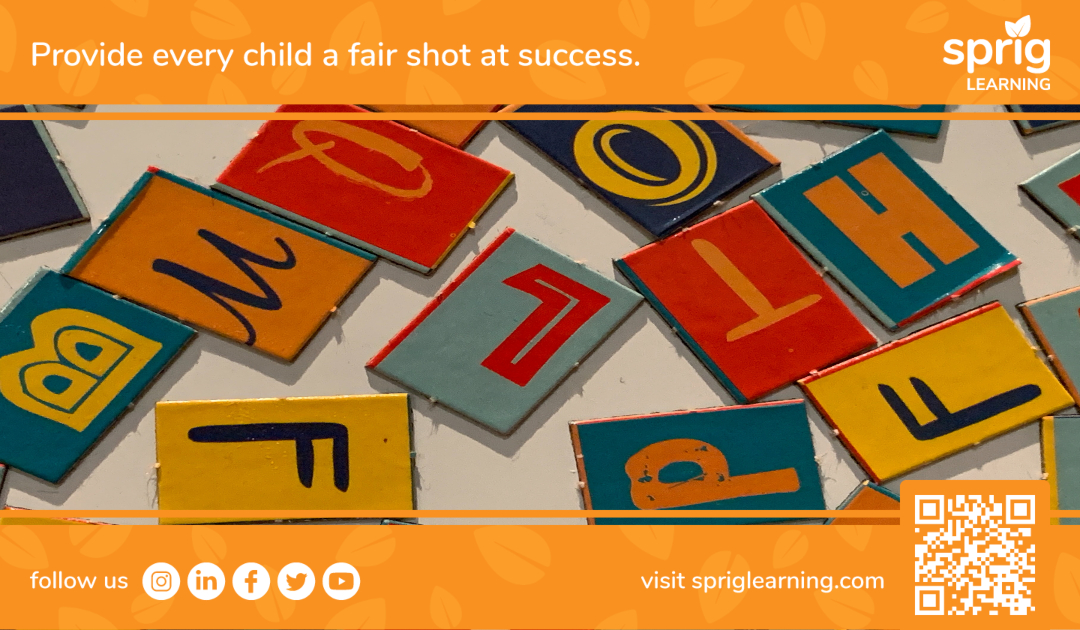Literacy rates in the US were already dropping before COVID-19, but the pandemic has definitely worsened the situation.
In Virginia for example, approximately one-third of K-2 students scored below the early literacy benchmark last fall. This is a record high in the 20-year history of conducting The Phonological Awareness Literacy Screening assessment in the commonwealth of Virginia.
This year, various states are reporting improvements in grade-level literacy rates as schools, for the most part, have returned back to normal. But in the majority of the states, the number of students at risk of not learning to read remains higher than pre-pandemic levels.
Data from over 1,300 schools in 37 states in the US using the Dynamic Indicators of Basic Early Literacy Skills assessment suggests that a large share of the improvements have been made for Grade 3 to 5 students.
K-2 students and students from marginalized socioeconomic backgrounds have been affected disproportionately by the pandemic.
There is data to show that students attending schools in lower-income zip codes or in schools serving a higher portion of Black and Latino students faced the brunt of missed or disrupted learning opportunities.
The above finding is also true when we zoom in on any particular region. In the Boston region, for example, the percentage of students in low-income schools who are at risk of reading failure doubled during the pandemic.
This is a major concern because birth to age 8 (Grade 3) is a critical period for learning how to read. It reveals the issue of literacy inequity, which is a big thorn to achieving reading success for all.
Vulnerable groups, either due to age or background, are lagging behind on the road to learning recovery.
6 Major Difference Makers for Early Literacy

Given the current state of affairs for K-2 students, and for those from marginalized backgrounds, Sprig has identified six factors that make a positive difference in the learning outcomes of children.
These six factors, when understood properly, can be used to make a difference for students who are: struggling to read, just beginning to learn how to read, or going to start learning in the near future.
Below, we’ve paired each factor with a recommendation for action.
1. Correlation of Schooling and Reading— Equip Teachers To Spend More Time With Students.
Stanford University conducted a study which showed that Grade 2 and 3 students were 30% behind in reading fluency last year, compared to a typical school year. As soon as school stopped in the spring of 2020, the students’ development of oral reading fluency did too, and remained stagnant during the summer.
There was a strong recovery in the fall, which is a testament to the hard work of the teachers. But the resurgence in growth was not strong enough to make up for the earlier loss, which carried over to the next year.
The takeaway here is that in-person instruction, or its closest substitute, is still the best way to teach early literacy skills and concepts to young readers.
Post-pandemic, there is a big rise in remote and blended learning. While it’s good to have such measures in place as contingency plans, one-on-one time between a teacher and a student is still irreplaceable, especially for our youngest learners.
Such personalized attention can best be received in a classroom environment, where the teacher gets to know the student over time and builds trust.
2. Teacher’s Knowledge of Foundational Literacy Skills— Offer Evidence-based Instruction.
20 empirical studies were reviewed to validate the positive effect of teacher preparation and training programs on elementary teachers’ knowledge of the science of reading (SoR), and also student outcomes in reading.
When teachers are well versed on the SoR, their students achieve better outcomes in reading.
In particular, training where teachers had the opportunity to apply their learned knowledge and skills under expert guidance resulted in the biggest growth in teacher knowledge.
The next factor (Factor 3) in this article talks more about receiving the right guidance, but the first step is to have the right knowledge about reading instruction.
Any time evidence-based instructional strategies are used, especially those that comply with the SoR, the early learner has a better shot at reading success. It’s why Sprig Reading uses an early literacy framework that is based on the SoR.
3. Role of Literacy Coaching— Support The Teacher With Specialist Literacy Roles.
Literacy specialists make a big difference in the success of early literacy programs. Primary school teachers have many tasks to do, and it helps to have reading specialists in the team to work with to provide a more well-rounded educational experience to striving readers.
In particular, the literacy coach role has had a great impact on the reading achievement of early learners.
There are many examples, such as this one research paper from a large urban school district in southeast Ohio, where literacy coaches improved teacher’s sense of efficacy in literacy instruction in multiple survey items.
Such as:
- Using a student’s oral reading mistakes as an opportunity to teach effective reading strategies.
- Using a variety of informal and formal reading assessment strategies.
- Providing specific, targeted feedback to students’ during oral reading.
- Provide students with opportunities to apply their prior knowledge to reading tasks.
The greatest gain of working with a literacy coach was: matching differentiated reading materials to the accurate level for students in their classrooms.
The number of different ways in which specialist roles like that of a literacy coach can help primary teachers is quite amazing. What if a literacy coach is not available? In such an instance, a robust platform backed by learning resources can guide teachers.
But in an ideal scenario, both teachers and literacy specialists should collaborate in a team-based setting.
4. Culturally Responsive Teaching— Ensure Diverse Student Needs are Being Met.
There are studies to show that when teachers’ self-efficacy for culturally responsive instruction increases, it increases the likelihood of early literacy success for English Learners. Not everyone starts off on an even playing field. In diverse communities, those from different backgrounds might require specialized teaching expertise or learning materials.
Sprig’s work with Indigenous communities in Canada is an example of combining high-quality early learning programs and adapting them to local traditions, language and customs. This truly helps position every child to succeed in early literacy.
5. Appropriate Screening at the Right Time. — Diagnose Early.
Studies show that early literacy assessments in pre-kindergarten are correlated to literacy performance in kindergarten and beyond. These assessments are good at identifying students who may benefit from early literacy interventions as they enter kindergarten.
Sprig has highlighted the importance of early literacy intervention in a previous blog.
The K-2 group of students is especially vulnerable, because the type of educational experience they get in this formative period could either make or break their case for reading success in future years.
Therefore, it helps to have some type of formative assessment in place, where a student is immediately assessed as they enter a program. This allows commensurate intervention to be applied if needed, which can unblock reading struggles and pave the road to reading mastery.
6. Parental Involvement in the Early Years— Communicate With Parents.
Early childhood learning experience, at home, or in any early learning program has a tremendous impact on future reading success.
For example, one study determined that the number of words children hear by age 2, significantly predicts 16 language and literacy outcomes over the next 9 years. This includes letter identification, phonological awareness, vocabulary, and reading comprehension, which are building blocks of the Science of Reading.
Learning begins at home, but then continues in school, as a child is introduced to a formal schooling system. As such, it’s so important to build that crucial nexus between parents and educators, so they can fill each other in on the particular needs, interests, strengths and weaknesses of the student when it comes to early reading.
All of Sprig Learning’s platforms, including Sprig Reading, have this component built-in, whereby educators can share progress reports with parents. In Sprig Language, parents are invited to fill out surveys to build a broader understanding of the learning needs for their child.
Take the Recommended Steps for Early Literacy Success

The current state of affairs in early literacy is uncertain. Yes, progress is being made. But that progress is geared towards getting back to pre-pandemic levels of reading success, which was not ideal to begin with. Also, it’s not clear if the progress made is at risk of regression in the future.
The good news is that more and more evidence is emerging which directly states what works in early literacy. The scope of the issue is large enough to deserve district-wide and state-wide attention, and indeed it has.
By understanding these six factors and taking appropriate measures, it’s possible to provide adequate, sustained, and targeted supports which will usher us into a new era, where high-reading proficiency for diverse classrooms is the norm.
Sprig Reading, Sprig Learning’s new platform for evidence-based early instruction for K-2 teachers, is going to be released on August 26th. Join the waitlist now to receive exclusive updates.

